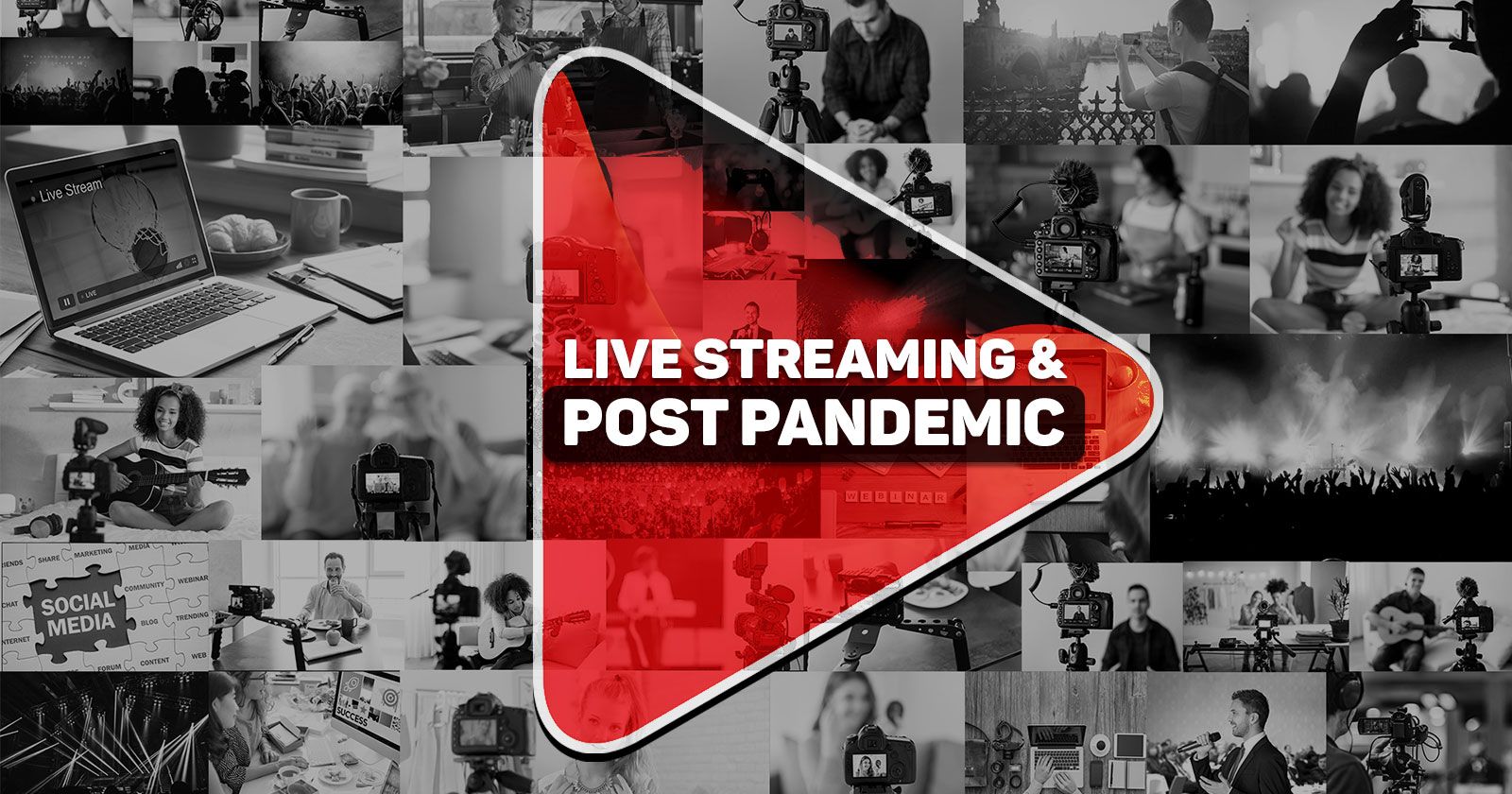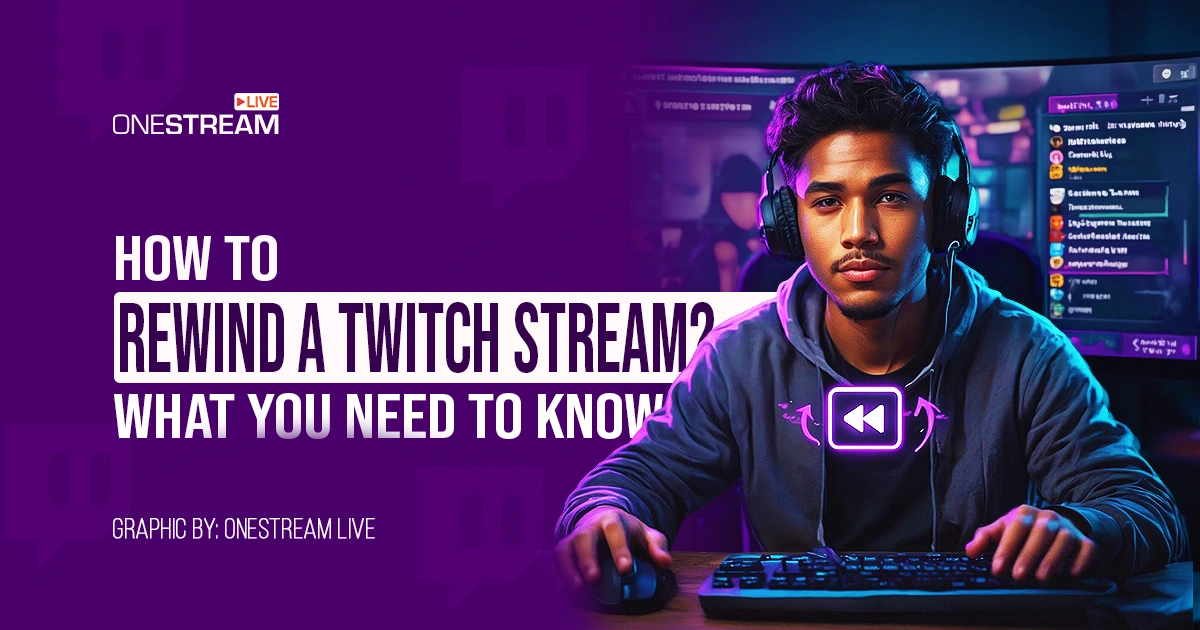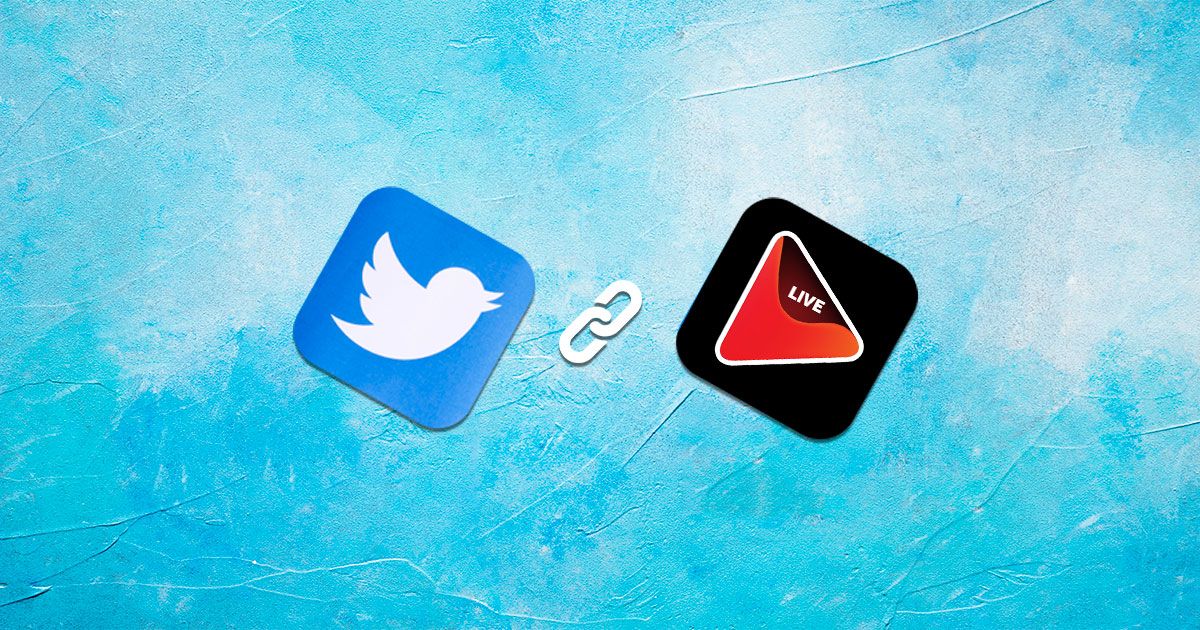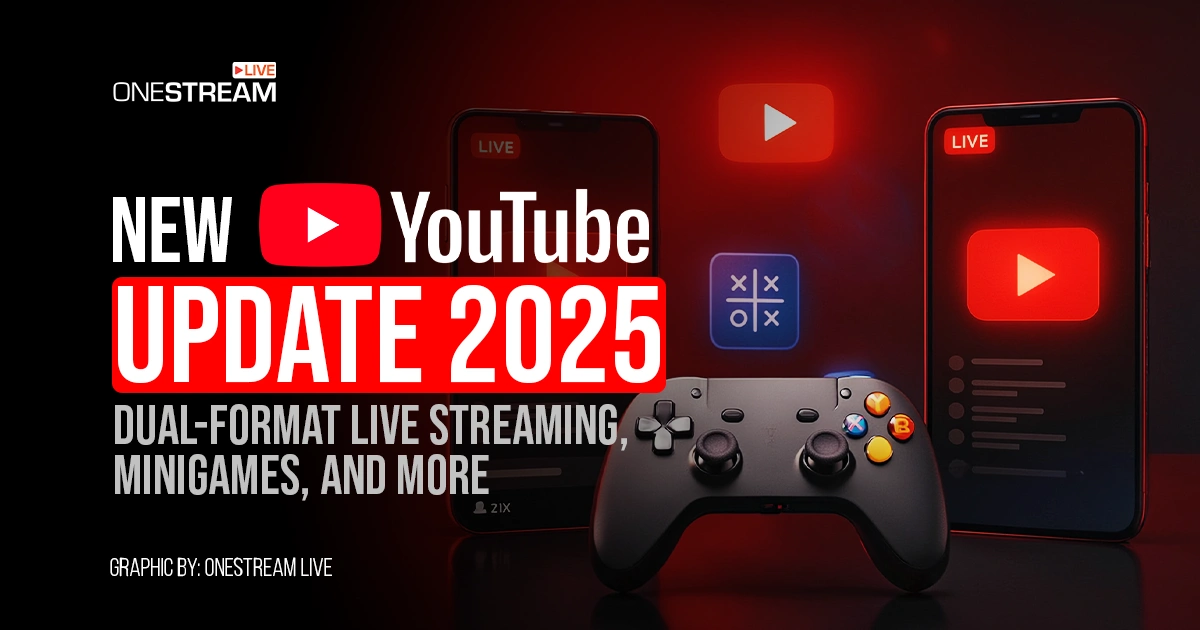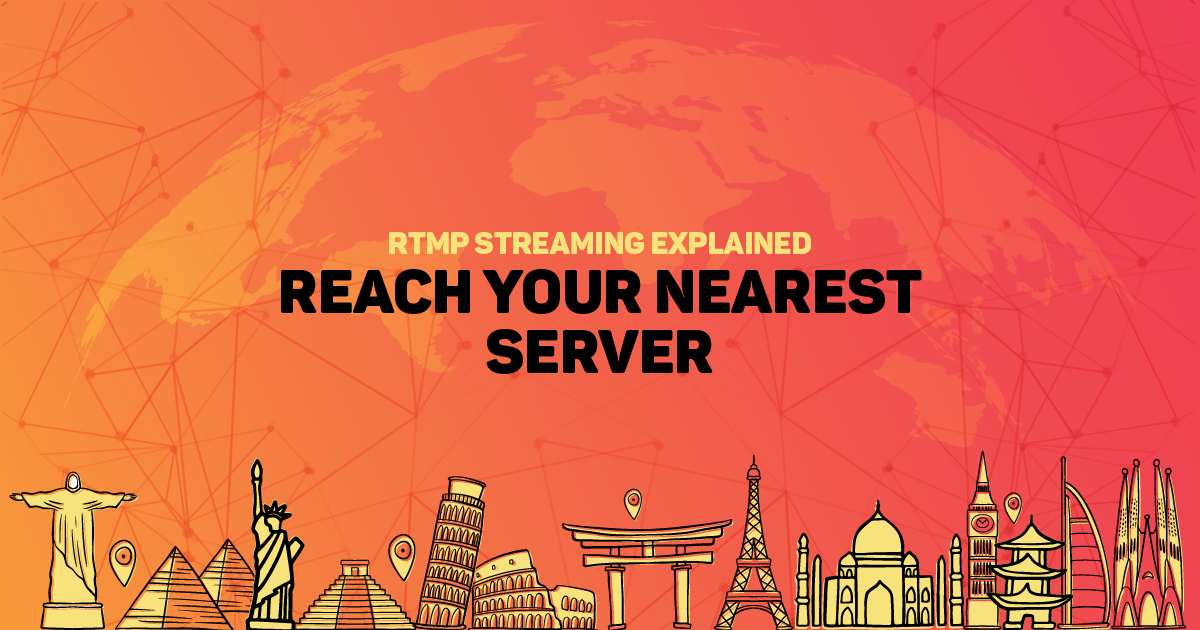The novel coronavirus pandemic has brought an unexpected revolution in the field of information technology in just a few months. As it shuttered malls and evacuated offices, millions across the globe moved their lives to virtual events.
And as the social distancing directives became stricter, people explored online event platforms for both work and leisure. The question, then, remains: how much of this digitalization remains in 2025 and the coming years?
Interestingly, the number of events going virtual is set to grow rapidly. According to reports, the global live streaming market size was estimated at USD 87.55 billion in 2023 and is set to reach USD 345.13 billion by 2030. This is promising growth, with a CAGR of 23.0% from 2024 to 2030.
This represents a significant leap, reflecting how virtual gatherings are becoming an integral part of our connection and engagement. More importantly, streaming insights have revolutionized the digital paradigm. But why is live streaming becoming popular across various domains?
This article will present how live streaming became significant during COVID-19 and radically changed the way we connect, engage, and consume content. We’ll look into how businesses, musicians, and religious services can employ live streaming effectively in the post-pandemic world.
The pandemic revolutionized industries to adopt virtual events and transform how we connect and engage globally.
Online broadcasts are significant for businesses, musicians, religious groups, and content creators.
The live streaming market suggests rapid growth of virtual gatherings across industries.
Use OneStream Live to schedule, multistream, and create authentic connections across platforms.
How Did Live Streaming Surge During the Pandemic?
Call it a crisis-inspired innovation, but live broadcasts witnessed a significant surge during the COVID-19 pandemic. As a result, it brought entertainment, education, and business meetings directly to our audience’s homes.
Video consumption trends in 2021 highlighted the dominance of short-form videos, live streaming, and mobile-first platforms across global audiences. With lockdowns in place, more people turned to digital platforms, which helped them establish a sense of connection and normalcy during those challenging times.
Key Instances of Virtual Events
As concerts and festivals were cancelled, a surge in streaming trends emerged. Events like virtual concerts during COVID quickly became the new normal. With large-scale gatherings cancelled, musicians and other professionals turned to online broadcasts and streaming platforms to keep their audiences engaged
Schools shut down to transform into digital classrooms over Google. Gamers sought entertainment and even money-making prospects through live game streaming.
Offices shifted to living rooms, and corporate meetings and training started happening over Zoom. Moreover, fitness trainers and gurus were also seen adopting a new lifestyle during the COVID-19 pandemic. They began broadcasting health and fitness sessions amid the lockdown environment.
The pandemic led to a massive surge in streaming trends, attracting a larger audience than ever before. This growth led to the rise of what we now know as the gig economy.
Live Streaming and Platforms for Virtual Events:
COVID media consumption patterns revealed a massive shift toward digital-first experiences. During the COVID-19 pandemic, usage of social media platforms showed significant growth. Amusingly, TikTok topped the charts in Q1 2020 as this social platform achieved 315 million downloads, marking the highest number of downloads for any app in a single quarter.
With the rise of creator-focused social media platforms, streaming services’ popularity skyrocketed, fueling new forms of creativity and collaboration. These virtual events platforms gave a fresh wave of creators the chance to host diverse digital events, expand their influence, and monetize their work.
During the height of online media streaming in the COVID-19 pandemic, the ‘One World: Together at Home’ concert, curated by Global Citizen and led by Lady Gaga, became a defining moment. Streamed across YouTube, Facebook, Instagram, and broadcast TV, this virtual concert during COVID raised $128 million. It proved the power of live-streaming digital gatherings to drive real-world impact
Post-Pandemic: How Has Live Streaming Shaped Virtual Events?
Post-pandemic, virtual gatherings haven’t faded. Rather, they’ve matured. As in-person services return, consumer behaviour during the pandemic has permanently raised expectations for digital experiences.
The live streaming market continues to expand, with streaming services’ popularity on social networks and video platforms at an all-time high. Today, audiences rely on online broadcasts for entertainment, as well as to connect with brands, watch video game events, and shop through live commerce.
Far from slowing down, streaming statistics confirm steady growth across industries, proving that this shift is no temporary trend.
What are the Latest Market Trends in Streaming Services?
According to live streaming statistics, 82% of consumers prefer engaging with brands through live streams rather than static posts. This shift reflects how consumer behaviour during the pandemic reshaped expectations and why many companies now call live streaming their most effective post-pandemic marketing strategy.
Current trends in streaming services highlight the rapid rise of live commerce, where tech-savvy audiences expect instant access, chat-based interaction, and watch-later flexibility across categories. These streaming growth patterns prove that live video streaming marketing has become a core driver of ROI and brand trust.
And the best part is that live streaming is faster and leaner than traditional content production.
How are Businesses Adopting the Latest Market Trends?
- Announcements: Announce new products or services during social media streaming that generate excitement and drive instant engagement.
- Interaction: Conduct Q&A sessions during the live streaming events to connect directly with customers and gather feedback.
- Events: Live stream your virtual event. These events can be a simple product launch, conference, presentation, webinar, or panel talk. And if you are launching a product internationally, invite influencers from all over the globe to make your product a viral sensation.
- Customer Support: During live talk, open up an interactive floor for discussion with both existing and potential clients.
- Affiliated Hosted Streams: Collaborate with influencers and bloggers to tell your brand story through their own lens of experience.
Pro Tip: We know that your audience is divided across different social platforms, and streaming separately can be tiresome. Use OneStream Live and stream over 45+ social destinations simultaneously.
How Are Gamers and Musicians Transforming Virtual Events?
Since the pandemic initially forced artists, musicians, and gamers to go for virtual performances, it has changed access to entertainment forever. Now, live streaming gives musicians, artists, and gamers a real-time opportunity to expand their reach by connecting with a global audience..
This shift has a significant impact on emerging platforms like Kick, which was established in 2022. And now in 2025, according to video streaming insights, Kick is the second most-streamed platform. This platform is designed specifically for content creators looking to reach broader audiences in real time.
Read More: How to Live Stream on Kick with OneStream Live
Interesting Fact: Travis Scott’s Fortnite “Astronomical” virtual concert, held during the COVID-19 pandemic, became the talk of the town and remains the most viewed live stream of a virtual concert to this day. To your surprise, there were 12.3 million concurrent players and a total of 27.7 million unique players across multiple performances.
How to Make Your Stream a Viral Sensation
- Multistreaming: Reach a wider audience by broadcasting your live content to multiple platforms simultaneously, including Twitch, YouTube, and Facebook.
- Live Events and promotions: Conduct interactive gaming or virtual concerts with live chats and real-time feedback to engage your audience.
- Monetization: Launch limited-edition merchandise, such as autographed t-shirts, available exclusively during live shows.
Pro Tip: OneStream Live’s unified chat exclusive feature helps you access all your chats from multiple platforms, all in a single window: no more tab switching. Now you monitor, respond, and engage more effectively.
On top of that, OneStream Live provides exclusive access to 24/7 live Streaming on YouTube. Now you can stream pre-recorded content at any time, keeping your audience engaged across different time zones, even when you’re offline.
How Religious Streamers Are Connecting Communities Through Virtual Events?
Closing doors of mosques, churches, synagogues, and temples was a significant setback to the religious communities at the onset of the pandemic. However, many religious groups flourished during the pandemic, spreading their message through new online channels.
This shift also highlighted an apparent change in lifestyle before and after the pandemic. Today, we have adapted to the new norm as online broadcasting seems like a flexible way to connect with religion.
Many members of marginalized communities are restricted from attending in-person religious services. Thankfully, the ever-growing trends in streaming services allow them to participate in religious activities despite their apprehensions and limitations.
Live Streaming Strategies for Religious Outreach
- Creating Virtual Prayer or Discussion Groups: This real-time interaction and engagement allow participants to join virtual prayer sessions or discussions, and in return develop a sense of community even from a distance.
- Broadcasting Religious Events: These events could be fundraisers, community service activities, or special gatherings. Now you are reaching a broader audience to expand your impact and collect funds.
- Add Subtitles: With OneStream Live, use SRT files to add subtitles to pre-recorded videos, making your message accessible to all communities.
Pro Tip: With OneStream Live, create a dedicated religious webpage and design it with fonts, colors, and backgrounds that reflect your religious organization’s identity.
Read More: What It Takes to Run a Successful Livestream in 2025
Conclusion: Are virtual events going to take over live events?
During the COVID-19 pandemic, maintaining an online presence became a necessity, and as we adapted, we discovered the immense advantages of digital gatherings. This shift has led most of us to wholeheartedly adopt the new order in domains such as digital marketing events, music, gaming, religion, and more.
The change in lifestyle before and after the pandemic is evident, with live streaming now being a permanent platform for how we connect, engage, and consume content. While marketers and musicians, gamers and other content creators are on the hunt for viable alternative live streaming platforms, OneStream Live is on a mission to introduce user-friendly, unique, and innovative features.
Get ready to expand your digital presence, connect with your audience across multiple platforms, and stream like never before. Sign up now and discover the wonders of streaming services.
Frequently Asked Questions
Webinars and product demos bring potential customers to examine your product and make informed decisions thoroughly. Virtual conferences and summits introduce your brand to a broader audience. Live training and workshops deepen the connection with your brand and encourage adoption.
During a digital event, lead with interaction (Q&A, polls, breakout rooms), shorter segments (10–20 minutes), and multi‑channel chat; repurpose highlights for social media streaming to extend the life of each event. Spotlight speakers on a live video broadcasting setup to keep energy high.
Current live stream trends highlight the growth of hybrid events (combining live and virtual elements), interactive live streams as compared to passive video, and personalized streaming experiences through adaptive bitrate technology and mobile-first live streaming for TikTok and Instagram audiences. Moreover, there is a rising demand for live streaming video marketing to drive conversions.
Streaming stats show stable audience demand, with spikes around major announcements and launches; marketers should schedule prime‑time slots and promote replays to maximize lifetime views.
Consumers normalized learning, shopping, and community via streams; they now expect virtual access, chat‑based participation, and watch‑later convenience across categories, which sustains virtual attendance rates.
Live streaming is now central to marketing strategy post-pandemic because it builds authenticity and trust. Now brands are using live sessions to launch products, share behind-the-scenes stories, and interact directly with customers. Unlike static ads, live content sparks real-time engagement and creates stronger emotional connections.
OneStream Live is a cloud-based live streaming solution to create, schedule, and multistream professional-looking live streams across 45+ social media platforms and the web simultaneously. For content-related queries and feedback, write to us at [email protected]. You’re also welcome to Write for Us!

